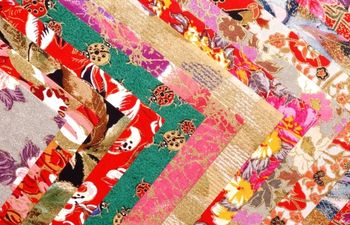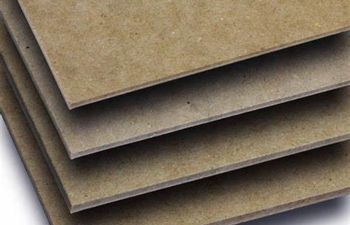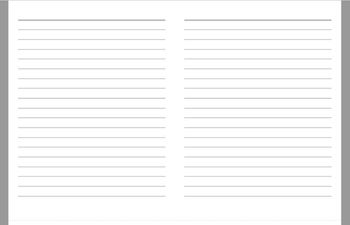You might assume all fine and specialty papers are acid free, but think again. As a bookbinder, I was surprised to find that some of my favorite (and very popular) covering materials are actually acidic. Yikes! In this post, I’ll share three of these as well as a some helpful tips if you’ve already purchased acidic paper and don’t want it to go to waste.
Why is some paper acidic?
Paper might be acidic for one or more of the following reasons:
- Lignin was not removed from the pulp prior to paper making (I discuss this in more detail in my post on archival quality)
- Eco-friendly papers made from up-cycled or recycled materials such as used textiles and other consumer waste products contain acid by default
- Some dyes, ink or other colorants can be acidic by nature. A great example is Hand Dyed Indigo (“Aizome”) papers crafted by Mieko Fujimori. These unique papers have a pH of 6-7, which is slightly acidic
Now, let’s go ahead and discuss four of the more popular paper options that are surprisingly not pH neutral.
#1: Italian Crepe Paper

Crepe paper has an amazing versatility that’s hard to describe. It can be very thin (15 gsm) or very thick (180 gsm), stretchy and used in tons of craft projects. Faux flowers, decoupage and wall art are just a few of the many things you can create with crepe paper.
In the bookbinding world, I started using 90 gsm crepe just a few months ago. This particular weight is new to the market and works great for covering my books. It wasn’t until a recent shopping that I noticed the acidity.
I’ve done some research, and it seems it’s the way crepe paper is manufactured lends itself to the acidic nature of the product. For some reason (if you know – please message me), organic acids are not removed before making pulp. I have a sneaky suspicion this might be related to the stretchy nature of crepe in general. In fact, the stretch of crepe paper is one of the most desirable qualities apart from coloration and thickness. If fiber and cellulose lend themselves to this stretchiness, then it makes sense.
Italian crepe is of the highest grade, which is evidence that acidity doesn’t necessarily indicate quality. I need to be clear that some crepe paper is acid-free. Just be sure to research before ordering.
#2: Japanese Chiyogami Yuzen

I’m absolutely in love with Japanese Chiyogami Yuzen paper, so this one hit hard. If you’ve followed me for a while, you’ve probably noticed this paper in my work. Over the past five years, I’ve created more than a dozen books featuring these intricate, beautiful patterns. I took for granted that some fine papers are not acid-free, no matter how popular they might be in the paper craft community.
Chiyogami papers are made with a pH neutral Kozo/sulphite base using a pretty standard paper making process. Designs are then layered one color at a time by hand using wood screen stencils. If the base is neutral, I believe the inks must be introducing acid. A few hours of research yielded one promising result: soy bean juice.
Chiyogami uses a traditional “Katazome-shi” stencil-dying process to apply each layer of color. This process uses persimmon-dyed Kozo as the stencil and a soy bean juice paste to help the pigments absorb. Soy bean juice is slightly acidic at a pH of 6, which is why these papers cannot be labeled acid-free or pH neutral. While a pH of 6 doesn’t seem like much, it’s definitely enough to speed up decay over time.
#3: Japanese Tissue Papers
Japanese Tissue Papers are well-known in the bookbinding community for their strength despite being incredibly lightweight (20 gsm or slightly higher). We typically use these papers to repair books or reinforce the spine, so I was surprised to find some of them are actually acidic. Below are two popular papers to be aware of.
Japanese Ethereal Paper

Japanese Ethereal paper is nearly see-through, soft and luxurious. It’s incredibly strong even though the weight is a mere 20 gsm. The strength of this tissue is derived from the base, which is created from wood pulp and rayon. Rayon is a slightly acidic (pH 5 or 6) synthetic fiber, which is why this paper cannot be considered acid-free.
The patterns of the paper and see-through quality make it perfect for gift wrap, screens, lamp shades and collage work. These non-archival applications don’t require the paper to be acid-free, so it sort of makes sense.
Japanese Tarasen Washi Paper

Another paper created from wood pulp and rayon is Japanese Tarasen Washi. This paper is thicker than Ethereal at 30 gsm, but not by much. The ornate patterns make it great for Shoji screens, lamp shades, gift wrap and envelope liners.
In bookbinding, it can be tempting to use this paper in in place of glassine sheets between photo album pages. Sadly, the acidic nature makes it terrible for this purpose – so be sure to stick with glassine for the long term!
What if I already own some of these papers? Do I have to throw them away?
No, absolutely not! If you’ve already purchased some of these papers (like me!) and don’t want them to go to waste, there are options.
Apply a Deacidification Spray
Any acidic paper can be made acid-free by using a simple deacidification spray. These eco-friendly sprays neutralize paper by applying a layer of magnesium dioxide to the surface. Not only does the magnesium dioxide mix with acid to neutralize the pH, it also provides a buffer to prevent future problems (like acid migration). Isn’t technology wonderful? See below for a link to this product.

Use acidic paper on short-life projects
If you’re not creating family heirlooms or fine art bindings, don’t sweat it. Acid isn’t the only thing breaking down your paper. Insects, temperature and other environmental factors also contribute. If you can control for these by properly storing your books, they will still last a very long time. Check out my post on archival quality for tips on how to protect and store books and other paper memorabilia.
Do your research!
I was upset to find out that two of my favorite online bookbinding retailers, Hollanders and Talas Online, do not state the acidic nature of Japanese Chiyogami Yuzen. Both carry a nice stock of these papers, but there is no indication that they’re acidic. I find this somewhat misleading to newer book makers who might not realize the impact of acid on their projects.
It’s safe to say we shouldn’t just assume – like I did – that what’s being sold from a major retailer is safe for archival quality work. Always do your research!
Good luck to you!
More bookbinding goodness
✨ What tools do I need to get started bookbinding?
- Bookbinding Tools & Supplies Quick Start Guide – learn all about book making tools, which to buy first & where to go online
- Pick up my popular Complete Starter Bookbinding Tools Kit – all the bookbinding essentials in one spot
🌟 Looking for a simple way to start making books?
Try a Complete Book Materials Kit. Each one has everything you need (+ tutorials & videos) to make a beautiful book without all the fuss.
Thank you for taking me along on your book making journey!
Misty












